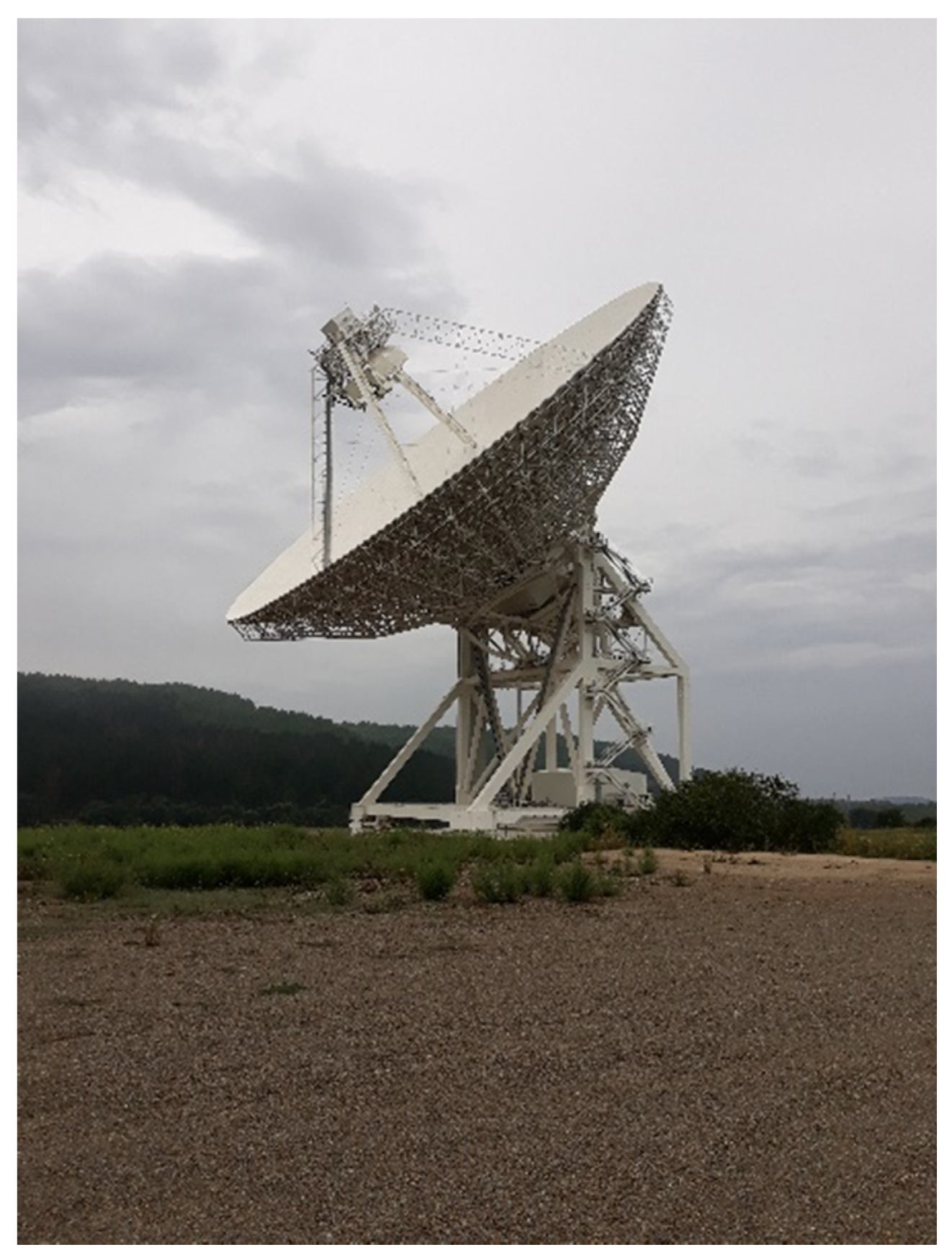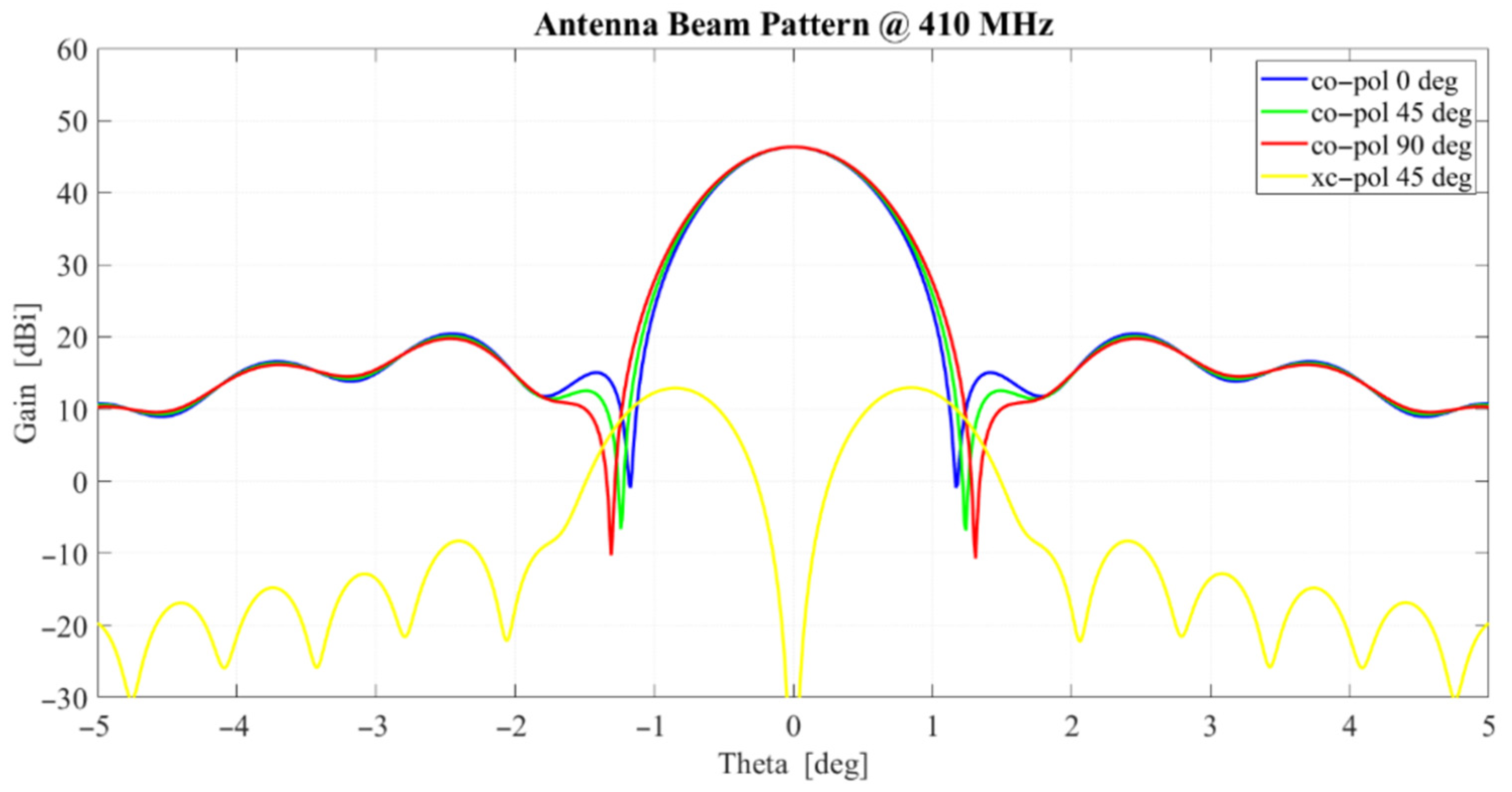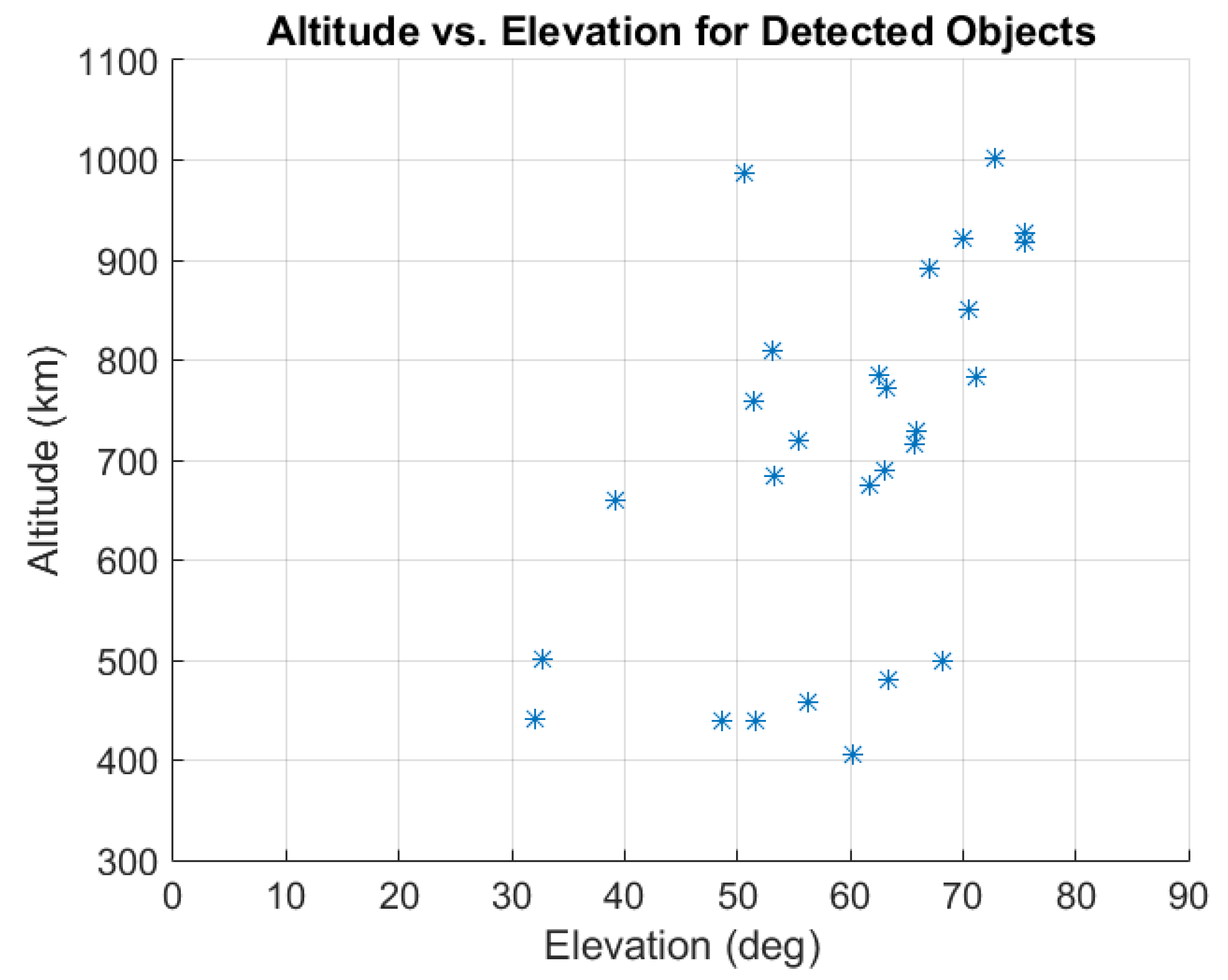Recent Advances of the BIRALET System about Space Debris Detection
Abstract
1. Introduction
2. The BIRALET System
3. Results and Discussion
4. Conclusions and Future Works
Supplementary Materials
Author Contributions
Funding
Institutional Review Board Statement
Informed Consent Statement
Data Availability Statement
Conflicts of Interest
References
- Xi, J.; Xiang, Y. Space Debris Detection Using Feature Learning of Candidate Regions in Optical Image Sequences. IEEE Access 2020, 8, 150864–150877. [Google Scholar] [CrossRef]
- European Space Agency. Space Operations—ESA and Space Debris; ESA Communication Production: Oakville, ON, Canada, 2013; ISBN 978-92-9221-059-5. [Google Scholar]
- Klinhrad, H. Space Debris—Model and Risk Analysis; Springer: Chichester, UK, 2006; pp. 199–205. [Google Scholar]
- Kennewall, J.A.; Vo, B. An Overview of Space Situational Awareness. In Proceedings of the 16th International Conference on Information Fusion, Istanbul, Turkey, 9–12 July 2013; pp. 1029–1036. [Google Scholar]
- Vallado, D.A.; Griesbach, J.D. Simulating Space Surveillance Networks. In Proceedings of the AAS/AIAA Astrodynamics Specialist Conference, Girdwood, AK, USA, 31 July–4 August 2011. [Google Scholar]
- Weeden, B.; Cefola, P.; Sankaran, J. Global Space Situational Awareness. In Proceedings of the Advanced Maui Optical and Space Surveillance (AMOS) Conference, Maui, HA, USA, 14–17 September 2010. [Google Scholar]
- Muntoni, G.; Pisanu, T.; Montisci, G.; Andronico, P.; Valente, G. Crowded Space: A Review on Radar Measurements for Space Debris Monitoring and Tracking. Appl. Sci. 2021, 11, 1364. [Google Scholar] [CrossRef]
- Pisanu, T.; Schirru, L.; Urru, E.; Gaudiomonte, F.; Ortu, P.; Bianchi, G.; Bortolotti, C.; Muntoni, G.; Montisci, G.; Protopapa, F.; et al. Upgrading the Italian BIRALES system to a Pulse Compression Radar for Space Debris Range Measurements. In Proceedings of the 22nd International Microwave and Radar Conference (MIKON), Poznan, Poland, 14–17 May 2018. [Google Scholar]
- Valente, G.; Iacolina, M.N.; Viviano, S.; Saba, A.; Serra, G.; Parca, G.; Impresario, G.; D’Amore, G.; Asmar, S.; Montisci, G.; et al. Sardinia Deep Space Antenna: Current Program Status and Results. In Proceedings of the International Astronautical Congress (IAC), Washington, MD, USA, 21–25 October 2019. [Google Scholar]
- Pisanu, T.; Concu, R.; Gaudiomonte, F.; Marongiu, P.; Melis, A.; Serra, G.; Urru, E.; Valente, G.; Portelli, C.; Bianchi, G.; et al. SRT as a Receiver in a Bistatic Radar Space Debris Configuration. In Ground-Based and Airborne Telescopes IV; International Society for Optics and Photonics: Bellingham, WA, USA, 2016; Volume 9906, p. 99060G. [Google Scholar]
- Muntoni, G.; Schirru, L.; Pisanu, T.; Montisci, G.; Valente, G.; Gaudiomonte, F.; Serra, G.; Urru, E.; Ortu, P.; Fanti, A. Space Debris Detection in Low Earth Orbit with the Sardinia Radio Telescope. Electronics 2017, 6, 59. [Google Scholar] [CrossRef]
- Schirru, L.; Muntoni, G.; Pisanu, T.; Urru, E.; Valente, G.; Gaudiomonte, F.; Ortu, P.; Melis, A.; Concu, R.; Bianchi, G.; et al. Upgrading the Sardina Radio Telescope to a Bistatic Tracking Radar for Space Debris. In Proceedings of the 1st IAA Conference on Space Situational Awareness (ICSSA), Orlando, FL, USA, 13–15 November 2017. [Google Scholar]
- Muntoni, G.; Schirru, L.; Montisci, G.; Pisanu, T.; Valente, G.; Ortu, P.; Concu, R.; Melis, A.; Urru, E.; Saba, A.; et al. A Space Debris-Dedicated Channel for the P-Band Receiver of the Sardinia Radio Telescope: A Detailed Description and Characterization. IEEE Antennas Propag. Mag. 2020, 62, 45–57. [Google Scholar] [CrossRef]
- Montisci, G.; Valente, G.; Muntoni, G.; Marongiu, P.; Pisanu, T. A Compact Q-Band Rectangular Waveguide Thermal Isolator. IEEE Trans. Microw. Theory Tech. 2020, 68, 611–619. [Google Scholar] [CrossRef]
- Doornbos, E.; Klinkrad, H.; Visser, P. Use of Two-Line Element Data for Thermosphere Neutral Density Model. Adv. Space Res. 2008, 41, 1115–1122. [Google Scholar] [CrossRef]
- Ladu, A.; Montisci, G.; Valente, G.; Navarrini, A.; Marongiu, P.; Pisanu, T.; Mazzarella, G. High-Performance Cryogenic Fractal 180° Hybrid Power Divider with Integrated Directional Coupler. Radio Sci. 2017, 52, 757–766. [Google Scholar] [CrossRef]
- Ladu, A.; Valente, G.; Montisci, G.; Mazzarella, G. A Wideband Quadruple-Ridged Horn Antenna for the Multifeed S-Band Receiver of the Sardinia Radio Telescope. J. Electromagn. Waves Appl. 2016, 30, 1207–1216. [Google Scholar] [CrossRef]
- Valente, G.; Marongiu, P.; Navarrini, A.; Saba, A.; Montisci, G.; Ladu, A.; Pisanu, T.; Pili, M.; Dessi, S.; Uccheddu, A.; et al. The 7-Beam S-Band Cryogenic Receiver for the SRT Primary Focus: Project Status. In Millimeter, Submillimeter, and Far-Infrared Detectors and Instrumentation for Astronomy VIII; International Society for Optics and Photonics: Bellingham, WA, USA, 2016; Volume 9914, p. 991422. [Google Scholar]
- Valente, G.; Montisci, G.; Pisanu, T.; Navarrini, A.; Marongiu, P.; Casula, G.A. A Compact L-Band Orthomode Transducer for Astronomical Receivers at Cryogenic Temperature. IEEE Trans. Microw. Theory Tech. 2015, 63, 3218–3227. [Google Scholar] [CrossRef]
- Valente, G.; Montisci, G.; Mariotti, S. High-Performance Microstrip Directional Coupler for Radio-Astronomical Receivers at Cryogenic Temperatures. Electron. Lett. 2014, 50, 449–451. [Google Scholar] [CrossRef]
- Bolli, P.; Olmi, L.; Roda, J.; Zacchiroli, G. A Novel Application of the Active Surface of the Shaped Sardinia Radio Telescope for Primary-Focus Operations. IEEE Antennas Wirel. Prop. Lett. 2014, 13, 1713–1716. [Google Scholar] [CrossRef]
- Skolnik, M.I. Radar Handbook, 2nd ed.; McGraw-Hill: Boston, MA, USA, 1990. [Google Scholar]
- Valente, G.; Orfei, A.; Nesti, R.; Navarrini, A.; Mariotti, S.; Bolli, P.; Pisanu, T.; Roda, J.; Cresci, L.; Marongiu, P.; et al. Status of the Radio Receiver System of the Sardinia Radio Telescope. In Millimeter, Submillimeter, and Far-Infrared Detectors and Instrumentation for Astronomy VIII; International Society for Optics and Photonics: Bellingham, WA, USA, 2016; Volume 9914, p. 991425. [Google Scholar]








| Optics | Gregorian (Shaped) + BWG |
|---|---|
| Focal Positions | Primary: f/D = 0.33 Gregorian: f/D = 2.34 2 × BWG I: f/D = 1.38 2 × BWG II: f/D = 2.81 |
| Frequency Range | 0.3–116 GHz |
| Primary Reflector Diameter | 64 m |
| Secondary Reflector Diameter | 7.9 m |
| BWG Mirrors Diameter | 2.9–3.9 m |
| Azimuth and Elevation Speed (wind speed < 60 km/h) | 0.85 °/s (Az) 0.5 °/s (El) |
| Antenna Gain at 410 MHz | 46.6 dBi |
| Antenna Efficiency at 410 MHz | 57.7% |
| NORAD ID | Estimated Doppler (kHz) | Measured Doppler (kHz) | Error—Absolute Value (kHz) |
|---|---|---|---|
| 26102 | −7.96 | −7.44 | 0.52 |
| 36119 | 5.78 | 5.62 | 0.16 |
| 39194 | 4.22 | 4.44 | 0.22 |
| 15494 | 7.28 | 7.26 | 0.02 |
| 39452 | −8.66 | −8.82 | 0.16 |
| 39453 | −9.43 | −9.75 | 0.32 |
| 33492 | 8.49 | 8.16 | 0.33 |
| 30774 | −1.59 | −2.11 | 0.52 |
| 28931 | −5.85 | −4.66 | 1.19 |
| 3047 | −7.19 | −7.28 | 0.09 |
| 26222 | −3.63 | −3.49 | 0.14 |
| 27944 | 7.12 | 6.88 | 0.24 |
| 8458 | 3.53 | 3.40 | 0.13 |
| 6350 | 2.66 | 2.07 | 0.59 |
| 15595 | 7.80 | 7.42 | 0.38 |
| 36508 | 9.21 | 9.60 | 0.39 |
| 25482 | −6.31 | −6.48 | 0.17 |
| 11166 | −5.01 | −4.28 | 0.73 |
| 25105 | −7.69 | −8.04 | 0.35 |
| 4256 | −1.70 | −1.65 | 0.05 |
| 1328 | −4.04 | −3.30 | 0.74 |
| 7363 | −6.64 | −6.66 | 0.02 |
| 7337 | 4.87 | 4.90 | 0.03 |
| 22824 | 5.25 | 5.54 | 0.29 |
| 40961 | 9.59 | 9.92 | 0.33 |
| 12150 | −1.18 | −0.87 | 0.31 |
| 7646 | 4.64 | 5.36 | 0.72 |
Publisher’s Note: MDPI stays neutral with regard to jurisdictional claims in published maps and institutional affiliations. |
© 2021 by the authors. Licensee MDPI, Basel, Switzerland. This article is an open access article distributed under the terms and conditions of the Creative Commons Attribution (CC BY) license (http://creativecommons.org/licenses/by/4.0/).
Share and Cite
Pisanu, T.; Muntoni, G.; Schirru, L.; Ortu, P.; Urru, E.; Montisci, G. Recent Advances of the BIRALET System about Space Debris Detection. Aerospace 2021, 8, 86. https://doi.org/10.3390/aerospace8030086
Pisanu T, Muntoni G, Schirru L, Ortu P, Urru E, Montisci G. Recent Advances of the BIRALET System about Space Debris Detection. Aerospace. 2021; 8(3):86. https://doi.org/10.3390/aerospace8030086
Chicago/Turabian StylePisanu, Tonino, Giacomo Muntoni, Luca Schirru, Pierluigi Ortu, Enrico Urru, and Giorgio Montisci. 2021. "Recent Advances of the BIRALET System about Space Debris Detection" Aerospace 8, no. 3: 86. https://doi.org/10.3390/aerospace8030086
APA StylePisanu, T., Muntoni, G., Schirru, L., Ortu, P., Urru, E., & Montisci, G. (2021). Recent Advances of the BIRALET System about Space Debris Detection. Aerospace, 8(3), 86. https://doi.org/10.3390/aerospace8030086








